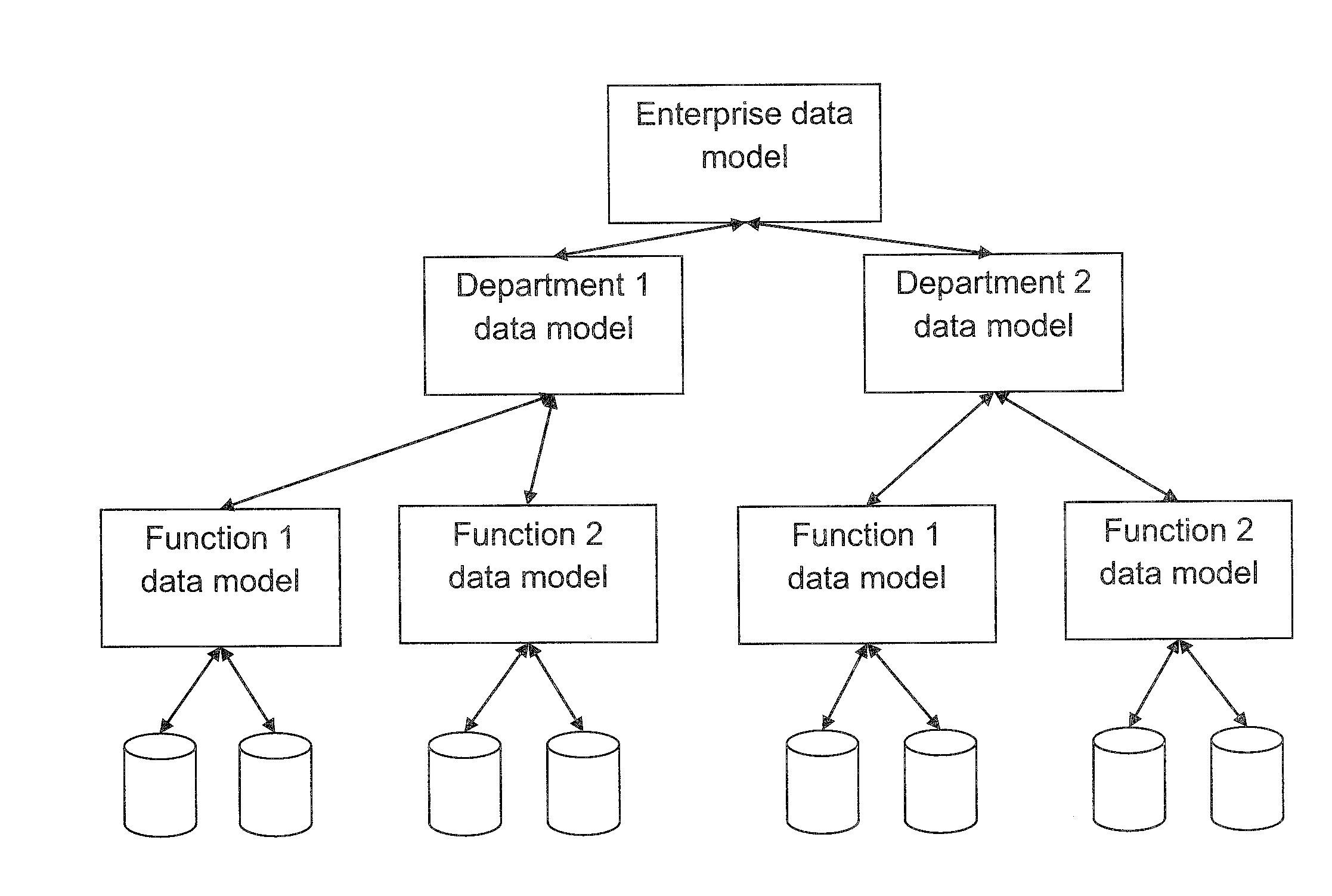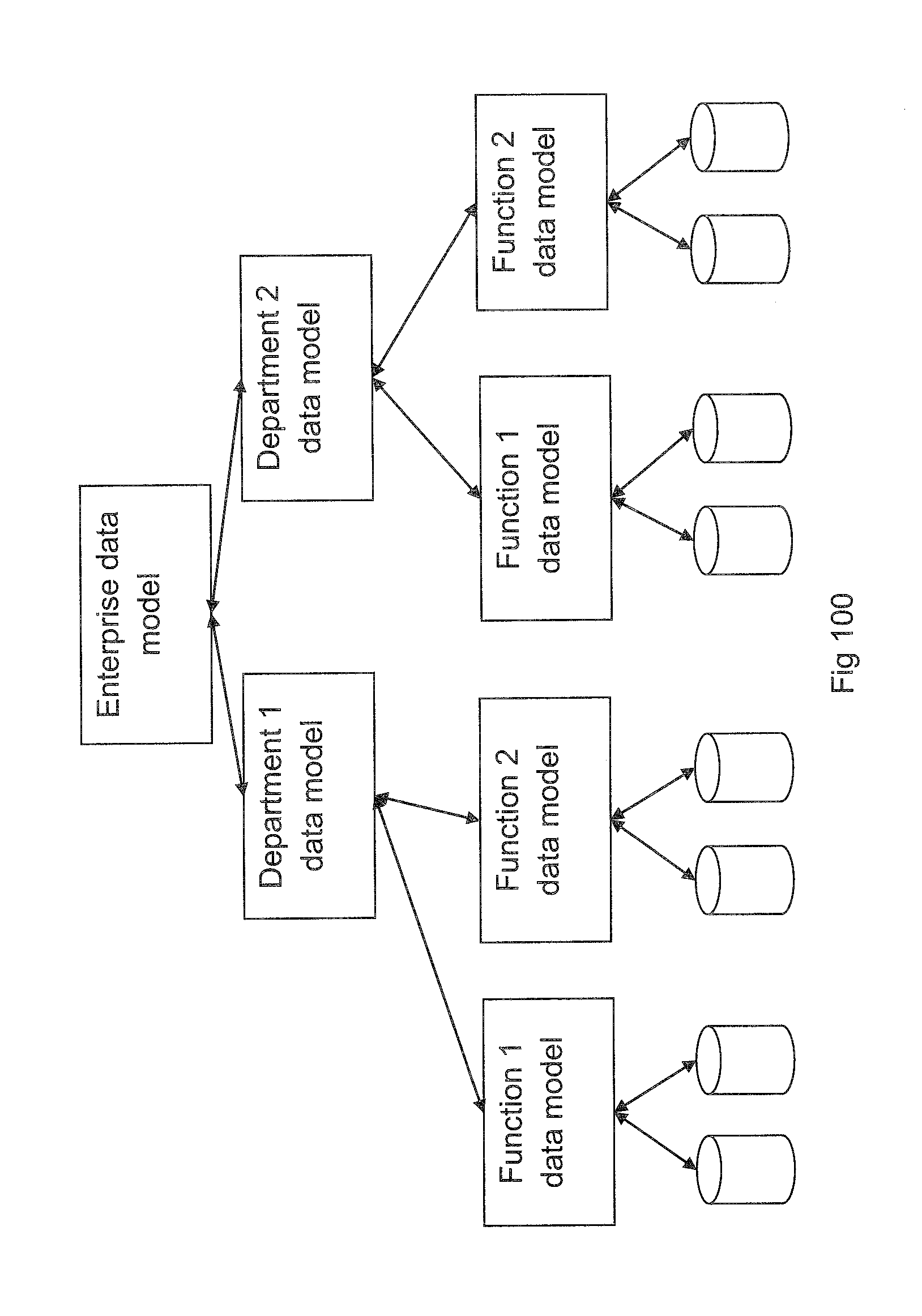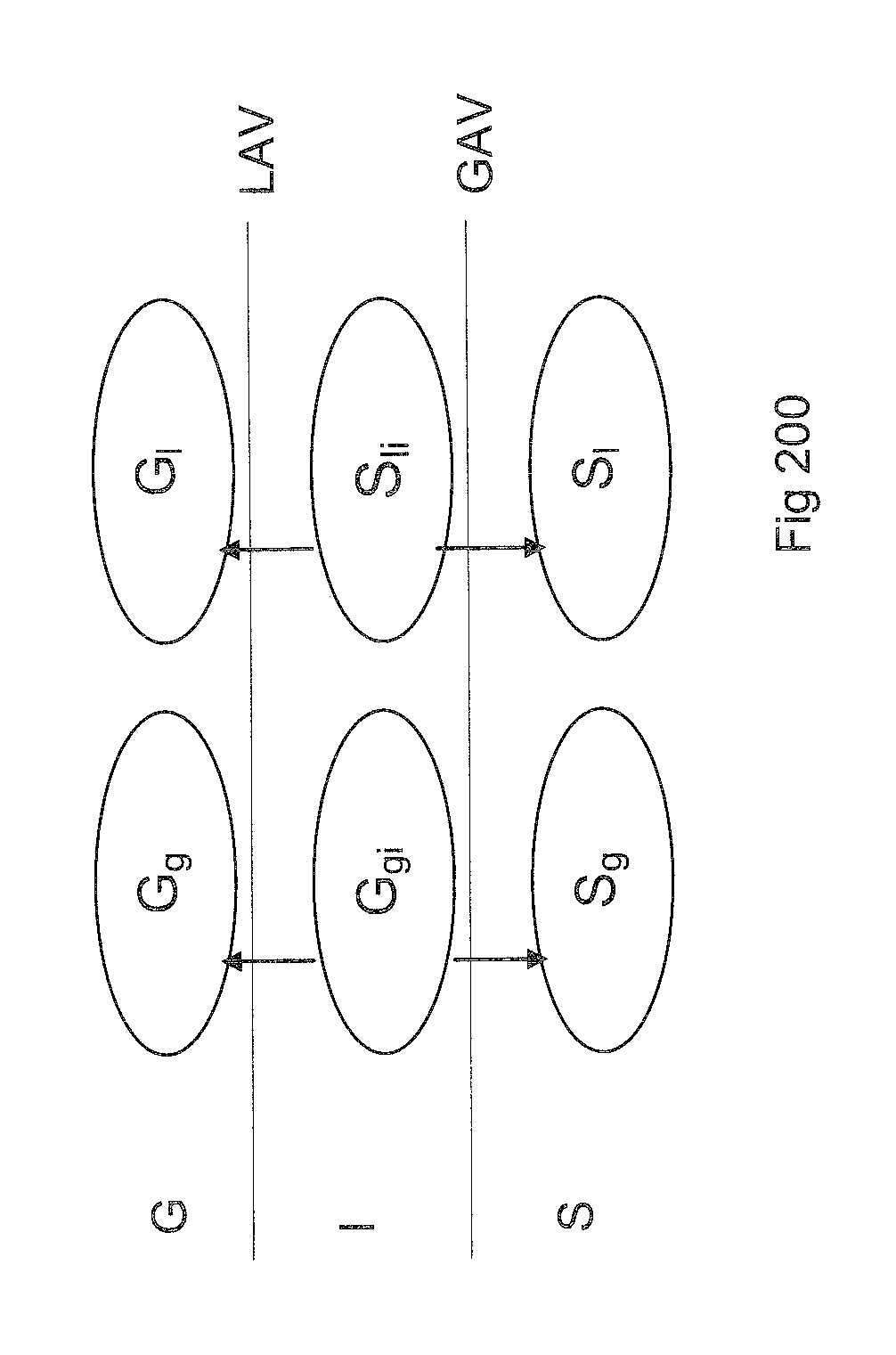Data integration using conceptual modeling framework
a conceptual modeling and data integration technology, applied in the field of system and method for data integration, can solve the problems of large amount of time, effort and computational resources, and insufficient two-layered relational system to model this complexity, and achieve the effects of avoiding violation, reducing time required, and reducing effor
- Summary
- Abstract
- Description
- Claims
- Application Information
AI Technical Summary
Benefits of technology
Problems solved by technology
Method used
Image
Examples
case 2
f the relations in both Global Schema G and Source Schema S are involved in both GAV and LAV mappings.
[0081]G is partitioned into three sets Gg, Gl and Ggl. The relations in Ggl participate in both GAV and LAV mappings. Similarly S is grouped into three sets Sg, Sl and Sgl (which are not necessarily mutually exclusive). This can be modeled as shown in FIG. 300, where Gg, Gl, Ggi, Gli, Sg and Sl are as in case 1, and Ggli is a copy of Ggl (with suitable renaming of tables), Sgli is a copy of Sgi (with suitable renaming of tables), with a one-to-one LAV mapping between Ggl and Ggli, original LAV mapping (after suitable renamings) between Ggl and Sgli, original GAV mapping (after suitable renamings) between Ggli and Sgl, and a one-to-one GAV mapping between Sgli and Sgl.
case 3
ting simple inheritance relationships between data entities
[0082]Let's say D={G, Sc, Sr, H, Ml, Mg} is our enhanced integration system
[0083]Where G is the global conceptual model, Sc is the source level conceptual model, Sr is the source level relational schema, H is the inheritance relation (i.e. pairs) over G∪Sc, Ml is the LAV mapping between G and S (i.e. Sc∪Sr), and Mg is the GAV mapping between G and S.
[0084]Now, turn an inheritance relation (i.e. B inherits from A) into the following GAV definition:
A:−B
[0085]If more than one class (say B, C, D, . . . ) inherit from A, we have as many mapping rules:
A:−B
A:−C
A:−D
[0086]Let Mi be the set of mapping rules so constructed to codify inheritance. From Ml∪Mg∪Mi is constructed the directed acyclic graph so as to capture relation derivation dependencies and from there the mapping layers. The directed acyclic graph for deriving relations is constructed as follows:
[0087]Let R be the set of relations and M be the set of mapping rules be...
case 4
ting inheritance-inheritance with complete condition
[0096]Suppose A is the super class of B and C and the inheritance is complete, in the sense that the union of the set of instances of B and the set of instances of C is always equal to the set of instances of A. In this case the mapping between A, B, C can be used as both GAV mappings and LAV mappings. We denote such rules as GAVLAV rules.
GAVLAV Rules:
[0097]
A:−B
A:−C
[0098]These rules can be used as a GAV mapping to access A, and LAV mappings to access B or C (in exactly those queries where B OR C is required).
[0099]If we directly construct the relation derivation graph from these rules we will end up with cycles. The key insight here is that these rules are not really cyclic (or recursive); they only specify derivation paths. For the purpose of derivation we can rewrite the above rules into the following equivalent rules without any loss of generality:
GAV Rule:
[0100]
A:−B
A:−C
LAV Rule:
[0101]
A′:−B
A′:−C
[0102]Where, in the construc...
PUM
 Login to View More
Login to View More Abstract
Description
Claims
Application Information
 Login to View More
Login to View More - R&D
- Intellectual Property
- Life Sciences
- Materials
- Tech Scout
- Unparalleled Data Quality
- Higher Quality Content
- 60% Fewer Hallucinations
Browse by: Latest US Patents, China's latest patents, Technical Efficacy Thesaurus, Application Domain, Technology Topic, Popular Technical Reports.
© 2025 PatSnap. All rights reserved.Legal|Privacy policy|Modern Slavery Act Transparency Statement|Sitemap|About US| Contact US: help@patsnap.com



